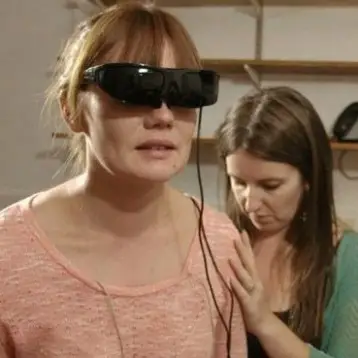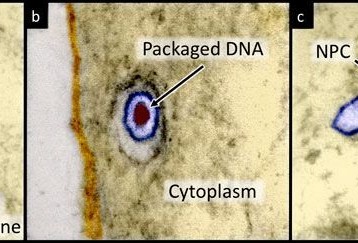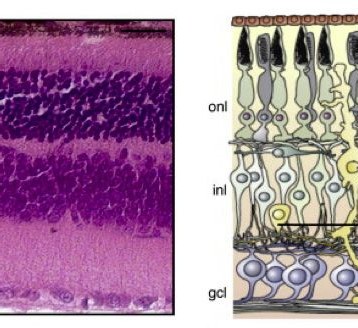|
Professor David Weitz, a physicist at Harvard specializing in fluid dynamics, designed the new process and is one of the three founders of the startup company GnuBio, designed to leverage and refine the technology into a commercially viable process. The droplets of water used as miniature test tubes were previously designed by Weitz and his research team (they are commercially available under a different startup company also founded by Weitz, RainDance Technologies). The picoliter droplets can be injected with chemicals, moved around on a microfluidics chip, and sorted based on color.
In this case, the droplets are injected with strands of known sequences of DNA labeled with optical bar codes. Unknown sequences from the sample being tested are also injected into droplets. Sections of complementary DNA strands bind, triggering a change of color. Microscopes and cameras are used to identify both the color changes and the optical bar codes, permitting identification of portions of the sample DNA that bind with the known sequences.
This technology is still in its early stages and is not yet capable of sequencing the entire human genome and is still far from commercialization. Rather than selling services, GnuBio plans to develop and sell machines that other scientists and technicians can use for sequencing. Thus, the process must be smooth enough to follow without extensive training and usable by people with varying levels of expertise and experience.
TFOT has previously reported on other DNA sequencing research including the sequencing of all known viruses causing the common cold, the mitoWheel graphical representation of the human mitochondrial genome, and mysteries surrounding the remodeling of the sea lamprey genome. TFOT has also presented a short video introducing the basics of human genetics.
Read more about GnuBio in this Harvard University press release. Read more about the picoliter droplets and their potential uses in biomedical research on this technology overview page on the RainDance Technologies website.










